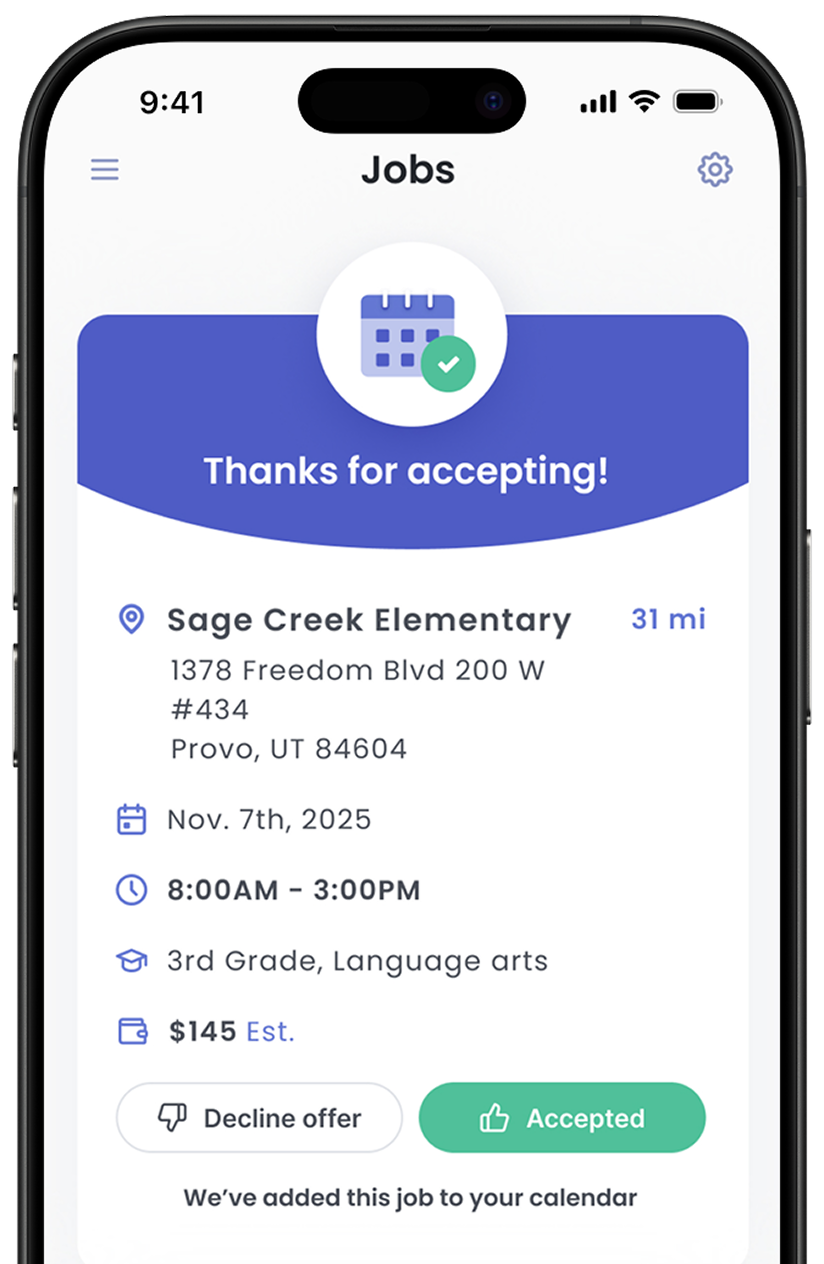Civic Education in Schools
In many states, you will likely see civics posters displayed in classrooms, such as The Declaration of Independence, the Preamble to the Constitution, the Bill of Rights, the Pledge of Allegiance, the branches of government, information about national or state emblems, and of course, flags. In some states, classrooms are required by statute to display these things.
One of the most common civic activities in schools is having classes recite the Pledge of Allegiance. Sometimes this is done as a school together over the announcement system, or in other cases it may be something directed by an educator or student in the classroom.
As a substitute, you may not be clear on what is permissible during the Pledge of Allegiance, especially if there isn't clear guidance in the sub plans, so here are some important tips:
- If the sub plans do not include the Pledge of Allegiance, you should not take it upon yourself to add it into the day.
- If the school recites the pledge together at a certain time, allow students to follow the routine in place. They will likely be invited to stand, place their hand on their heart, and say the pledge in unison. Follow the directions given on the sub plans if the pledge is facilitated in individual classrooms.
- Legally, students have the right to remain seated, remain silent, and even protest as long as they do not disrupt others' participation in the pledge. It is important to recognize that students may have religious or personal reasons for not participating. Students should not be compelled to participate, nor should they be harassed by anyone for choosing to participate or not participate in the pledge.
- Remember that your own political or personal views should never be shared with students.
Character Education in Schools
Most schools weave character education into the fabric of the school culture and classroom practices. One of the most common ways this is integrated into everyday activities is through core values, often using an acronym related to the school mascot (see examples in the images below).



These are usually instilled at the beginning of the school year through lessons, assemblies, counselor presentations, and so on. They are reinforced throughout the year and become common language for encouraging students to follow appropriate behaviors.
If you see posters like this in the classroom or around the school, it can help you with classroom management by using language that students are already familiar with and that their regular teachers reinforce.
Sometimes schools use other programs for character education, such as Covey's Leader in Me program (7 Habits of Highly Effective People), Character Counts, or the Be Kind People Project. Teachers may include character education or social-emotional learning activities in the sub plans, which you can facilitate for students.



Outside of any activities included in the sub plans, your biggest contribution to character education will be through your example to students. You should always model positive behaviors and encourage students to have positive behaviors.
.png)




